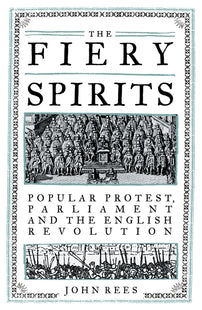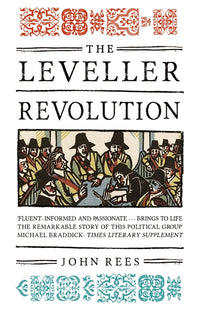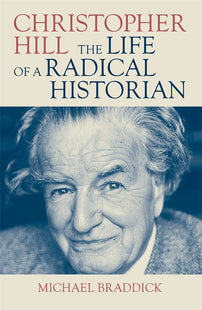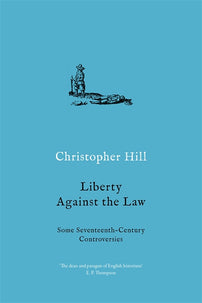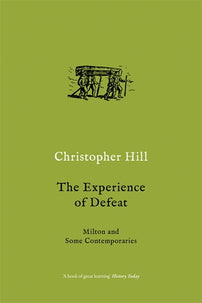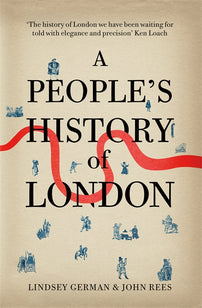The Waller Plot, Part I
In this three-part serial by John Rees, author of The Leveller Revolution and the recently published The Fiery Spirits, the riveting story of the Waller Plot is narrated over twelve images from the broadsheet, The Malignants Treacherous and Bloody Plot, that changed the course of the English Civil War in 1643

The war, the conspirators, their plot, and its discovery
1643: The second year of a bitter civil war in England. The fourth year since the opening of the Long Parliament. King Charles I and his court are at Oxford, chased out of London in early 1642 by rebellious crowds angered by the King’s failed attempt to crush parliamentary opposition to his rule by arresting five members of the House of Commons and one member of the House of Lords in the name of high treason. Those men, the MPs John Pym, John Hampden, William Strode, Arthur Hesilrige, Denzil Holles, and one Peer, Lord Kimbolton, later the Earl of Manchester, were now conducting the war against the King. But they were not all doing so with equal enthusiasm. Some MPs had quickly come to hate the war and long for the return of the King.
They were known as the "Peace Party", led by Denzil Holles. On the other side stood the "War Party’" led by Strode and Hesilrige, who thought that the only sure route to a workable political settlement was the complete military defeat of the King. Still others - Pym, Hampden, and Manchester - opposed a premature peace, but were unwilling to adopt the radical measures urged by the more resolute members of the War Party. These divisions were not limited to Parliament; they existed across the country. Even in the parliamentary heartland of the capital there were significant numbers of royalists. Many believed a bad peace was preferable to continued war.
In the spring of 1643, the peace policy gained popularity. At the King’s request, Parliament agreed to send a delegation to Oxford in the hope it might halt the war before the winter pause in hostilities came to an end. The Earls of Northumberland and Holland, with two other Lords and five MPs, delivered Parliament’s terms in February, though nothing else happened until the following month. It was never likely that the King was in favour of peace, and much more likely he was playing for time as Queen Henrietta Maria raised arms and finance on the Continent. The Queen opposed peace, as MPs came to know for certain when they intercepted her letters to Charles. By mid-April, the Oxford Treaty - as it became known - was essentially exhausted. But the Peace Party in London and in Parliament were by no means quieted.
Then, in late May, a plot was unearthed that transformed the political landscape. We can follow the course of this conspiracy in a remarkable broadsheet entitled, ‘The Malignants Treacherous and Bloody Plot against the Parliament and the City of London which was by God’s Providence happily prevented May 31 1643’, issued by parliamentarian supporters. It was printed by John Hancock Sr who specialised in such illustrated broadsheets in his shop in Popes Head Alley, running between Cornhill and Lombard Street in the City. Hancock was a mainstay of Parliamentarian printing, producing material for figures as diverse as Presbyterian Edmund Calamy and preacher Thomas Brooks, who eventually gave the funeral oration for Leveller Thomas Rainsborough.
Hancock’s broadsheet proves that the graphic novel is not a twenty-first century phenomenon. This document tells its story in twelve engraved scenes, each with explanatory captions. Running beneath the entire panorama is a propaganda verse about the plot. Let’s follow this account of the conspiracy scene by scene, unfolding what it would have told Londoners who read it in mid-1643.

Scene 1: The conspirators
Lady Aubigny, pictured in the cowl at the head of the conspirator’s table, was born Katherine Howard into one of the most powerful aristocratic families in England. The daughter of the second Earl of Suffolk and Lady Elizabeth Home, she secretly married Lord George Stuart in 1638, against both her parents’ wishes and those of the King. The King was Lord George’s guardian after his father died when he was six years old. On her marriage, Katherine became both a Catholic and Lady d’Aubigny because her husband held the French title of the ninth seigneur d’Aubigny.
The Lord and Lady Aubigny’s marriage was short lived. George was killed, at age 24, fighting for the King at Edgehill, the first battle of the Civil War, in October 1642. His widow soon became an intimate of Archbishop Laud, Charles’ hardline head of the Church of England, and a favourite at court in Oxford. Lady Aubigny obtained a pass from Parliament to attend to family business interests in London. She carried a Commission from the King for his supporters in London to raise a royalist force that would overthrow the rule of Parliament. This document she hid in her hair, or possibly the bodice of her dress, rightly assuming that Parliament’s guards would not dare to search her closely enough to discover it. This is the document that the engraving pictures her reading to the assembled conspirators. It is unlikely that she ever met a group of plotters in this way, but the Commission was explosive enough with or without her Ladyship reading it aloud.
In the Commission, the King directed his supporters to raise a royalist rebellion in the City of London. They were empowered, under Charles’ ‘Hand and Seal’, to appoint a twenty-one-man strong Council of War with authority to raise forces and appoint officers in London and the surrounding counties. The unvarnished purpose was that they should “have full power and authority…to lead and order the soldiers severally under their charges, and with them to fight against our enemies and Rebels, and them to slay & destroy, or them to save according to the law martiall…”
Who were the well-dressed gentlemen around the table who are receiving this Commission from Lady Aubigny? Some eighteen named individuals appear in the King’s instructions, the first named being Sir Nicholas Crisp, a merchant, a substantial East India Company shareholder and office holder, and a slave trader. By 1638, he had already crossed commercial swords with Maurice Thompson, soon to be one of the most radical backers of the parliamentarian cause in the City of London. King Charles knighted him in 1640 after he was elected to both Short and Long Parliaments. But he was expelled from his seat the following year as a monopolist, that is, a merchant granted a crown monopoly. By the time of the plot, Crisp had already acted as an agent for the King in London. He was questioned by the Commons in January 1643 when an intercepted letter revealed a £3,700 payment “for secret service done for his Majestie”, resulting in his subsequent arrest. Randall Mainwaring, a radical in charge of the City’s Trained Bands, and MP and future regicide Cornelius Holland, were instructed to seize his money and goods. Crisp had spirited much of his wealth away as he immediately fled to Oxford.
These committed, often battle hardened, Oxford-based royalists like Marmaduke Rawdon were positioned to be the military rulers of London if the plot succeeded. On the ground in the capital, the operation was in other hands, most notably those of Edmund Waller, the man who would give his name to the plot. Waller was MP for St. Ives, Cornwall, though his estates were near Beaconsfield. He inherited considerable wealth and found himself in even greater money when, in 1631 he married Anne Banks, the daughter of London merchant John Banks, and received a dowry of £8,000, the equivalent at the time of a skilled tradesman’s wages for more than 300 years. Waller was a member of Parliament from the 1620s, the youngest MP in the chamber. He became a favourite at court and a member of the Great Tew circle of Lucius Cary and Lord Falkland. He was also a considerable poet, though the Restoration poet, the Earl of Rochester, later described Waller in these unkind but not inaccurate terms:
He best can turne, enforce, and soften things,
To praise great Conqu’rours, or to flatter Kings.
In the Long Parliament, Waller was at first a moderate advocate of Parliament’s reforms. But, despite family connections to some of Parliament’s most consistent defenders (including Oliver Cromwell) political polarisation, the rise of radicalism and mobilisation of ordinary citizens quickly urged him to become a convinced royalist.
[book-strip index="1"]
Initially, Waller made his way to the King in Oxford but quickly returned to London under the King’s approval. His defence of Charles’ church policy under Archbishop Laud was ultimately grounded in his desire to protect private property from the mob. He looked on church hierarchy as an “outwork, which if it be taken by this assault of the people, and withall this Mysterie once revealed, that we must deny them nothing when they aske it thus in troopes, we may in the next place, have as hard a taske to defend our propriety, as we have lately had to recover it from the prerogative”. He believed that the example of ancient Rome was that “when the people began to flock about the Senate and were more curious to direct and know what was done, than to obey, that Commonwealth soon came to ruine”. Waller thought that if MPs started paying attention to claims of a ‘poore man that suffered by the Bishops’ they would end up having to listen to “a thousand Instances of poor Men that have received hard measure from their Land-Lords” which would be to “the disadvantage of the Owners”.
In 1641, Waller made a furious attack on fellow MP and soon-to-be radical Lord Mayor of London Isaac Penington. Waller’s repeated defence of the King in the Commons “won him a great reputation with people who wished the king well.” In July 1642, according to Sir Simond D’Ewes, the antiquarian, diarist and Waller’s fellow Peace Party MP, he urged “an accommodation to be had with his majesty and that a civil war might be avoided”. The opposition from the ‘fiery spirits’ in the house eventually confronted him. They were the radicals who were among the main targets of the Waller plot and among the most forward in exposing it. It is hardly surprising that Charles should treat Waller with great favour when he arrived in Oxford in January 1643 as a minor member of Parliament’s peace delegation, or that Sir Edward Hyde, later Earl of Clarendon, and the King’s senior advisor, should describe Waller as “the boldest champion of the crown in both houses”. Nor is it surprising that Waller clashed in the Commons with William Strode, one of the foremost fiery spirits, over peace proposals to the King.
Waller drew his brother-in-law, Nathaniel Tompkins, into the plot. Tompkins himself had served as an MP, entering parliament first in 1614 for Carlisle, and serving five times in the 1620s. Elected for Christchurch in 1621 and Ilchester in 1624, the seat he passed on to Waller, after which he again stood for Christchurch. Tompkins stood for the last time in 1628, before being made clerk to Queen Henrietta Maria’s council. He then ran the Queen’s patronage operation for the parliamentary elections of 1640. He was busy reporting to Sir John Lambe, the Queen’s Chancellor, about opposition from fiery spirit Alexander Rigby to Lambe being granted permission to leave London. He also reported on the disarray MPs had inflicted on themselves in the trial of the Earl of Strafford. When the Commons eventually voted Strafford guilty, Tompkins reported to Lambe that the MPs who had done so were named in print, ‘Alderman Penington being one’. The pamphlet Tompkins refers to was called “The Anabaptists, Jews, and Brownists of the House of Commons.” Tompkins concluded, “I hear it whispered in the court that the King will not let the Earl go, and that the Parliament is not likely to be long-lived.” But the Parliament did survive, and Strafford did not. Waller and his friends consulted with imprisoned former MP Hugh Pollard, who was expelled for his part in an earlier conspiracy against Parliament, the Army Plot of 1641. Waller also drew wealthy linen-draper Richard Challoner, who contemporaries regarded as an “eminent citizen”. Lady Aubigny herself delivered the Commission from Charles to Challoner.

Scene 2: Their army
The conspiracy was to be carried off by a combination of forces raised within the walls of the City and forces sent by the King to invade the capital. The clandestine organisation formed around seven members who presented a peace petition in the City at the end of the previous year, or, as the official account of the plot told it, was “raised out of the ashes of the late Petition of London for peace.” Plotters took an oath of secrecy. They aimed to build a cell-based network in which no one participant knew more than two others. Waller and his allies set about the intelligence work of determining the balance of forces in the City. They prepared lists in several parishes of whom they could and could not trust. The names were divided into ‘Right Men, (or of the King’s party;) Averse Men, (or the well-affected to the Parliament;) and Moderate Men, (or neutrals;)’, or, as one well-informed pamphleteer told it, ‘Cavaliers, Round-heads & Neuters’ or “the right, the perverse, and the sober party’. They were to specifically take note of the strength of “that party…which was notoriously violent against any accommodation”. These lists were returned to Waller.
In the City, the plotters reckoned a third were for their cause. That might be plausible if it was taken to mean all those that favoured peace. Rather more optimistic was their view that in the suburbs outside the City walls the proportions were two-thirds in their favour. They concluded they could raise twenty-thousand men in rebellion. Waller’s forces included supporters in the London Trained bands, and the rising was scheduled to take place on a night when their men were most numerous among those on duty. In the illustration, we see Waller’s claim that the royalist forces were to be made-up of three types: completely armed horsemen, those armed with clubs and halberds, and those armed with ‘what they could get’. One account also alleged that ‘a bloody Regiment of 1,000 rogues from Oxford’ who “by stelth at severall times should get into the City, and these to be imployed in the cutting of the throats of the chief Round heads”. They said the 16 “suspicious fellows” had already been arrested and had “confessed they came from Oxford upon such a designe”.

Scene 3: The tower
One of the main objectives of the rising was to gain control of the Tower of London, not only the most important bastion of the City’s military defences – anchoring the eastern end of the City wall, and an important place of imprisonment – but it also housed the mint and held a great deal of merchant wealth held there for safe keeping. The Tower had been a flashpoint in every phase of the Revolution so far. As early as 11 November 1640, Charles planned to visit the Tower to inspect ongoing works aimed at strengthening the military capacity. Matthew Craddock, MP for the City, Alderman and MP Isaac Penington objected to the visit in the Commons. Craddock claimed this was part of a design by Charles’ favourite the Earl of Strafford “who saied hee hoped the Citty would bee subdued in a short time”. The King’s courtier Sir Thomas Rowe replied that the royal visit was “onlie to shewe the king… that all his monie was not spent in vaine” and that “there was no intention against the Cittie,” to which Penington asked the pointed question: “Why baskets and Grenadoe were still upp seeing it was only a Triumph?” The King’s visit seems to have gone ahead, but Penington and Craddock returned to the issue in the Commons on 16 November. Craddock stated there might be trouble raising the £25,000 loan that MPs requested from the City unless the Tower was made safe.
[book-strip index="2"]
Waller’s plot was not the first royalist conspiracy to target the Tower. The Army plots of Spring 1641 – also headed by two courtier-poets, Sir William Davenant and Sir John Suckling – set in motion a scheme to seize the Tower. Its discovery gave John Pym an important moment of advantage in the Commons. In late 1641, moreover, Charles’ attempt to remove William Balfour, a committed parliamentarian, from his position as Lieutenant of the Tower and appoint loyalist Colonel Thomas Lunsford triggered the extensive rioting at Westminster and ultimately drove the King from London. When Charles was forced within days to abandon Lunsford as Lieutenant of the Tower, he alighted on the more moderate figure of Sir John Byron. But, as often with Charles, a plan which might have worked before his hostile intention became obvious it would not work once it was exposed. Byron left the thankless position under pressure from a military force brought to the gates of the Tower by Phillip Skippon, the officer held in high esteem in City military and political circles. As Byron reported the incident from January 1642:
Captain Skippon towards the evening marched very privately when it was dark to the backside of the Tower, and stayed at the iron gate with his men, which were about 500, where having continued a while with great silence, he sent one into the Tower to the Serjeant, who commanded the Hamleters that night, that he should march out of the Tower with his men and come to him. But the Serjeant desired to be excused, because, coming thither by my command, he durst not depart without it. Upon this answer Skippon sent him a second message, that those terms were vain, for he was sure I should never come into the Tower again as Lieutenant; but since he scrupled to come out of the Tower, he desired him to draw his men up to the iron gate, and upon the shooting of a musket to be ready to assist him. Whilst these things were in agitation I returned from the Parliament, it being almost 10 o'clock at night before I had my dismission; and so the plot was spoiled, but certainly the design was, in case I had been detained, to have surprised the Tower, and to have put in a Lieutenant of their own.
The parliamentarians soon had their way. Sir John Conyers, Parliament’s nomination, took control of the Tower. He quit by 1643, and Isaac Penington became effective Lieutenant of the Tower, though without official appointment. Parliamentarian Londoners held these events fresh in their minds, and any royalist attempt on the Tower was bound to trigger a deep resentment towards the conspirators.

Scene 4: The forts and outworks
At the time of the plot, a considerable proportion of The City’s population had been engaged in the construction of eleven miles of connected forts, emplacements, entrenchments and outworks known as the “lines of communication.” These completely encircled London and Westminster and ran along the south of the Thames enclosing Southwark. They costed the City £53,000, the equivalent of around £7 million at current rates. Randall Manwaring, one of the most militant members of the Militia Committee the plotters aimed to detain, was responsible for developing the defences from their pre-existing rudimentary form into a continuous circuit of forts and trenches. John Kendrick, another member, was a member of a committee for an even more radical plan for a General Rising. Kendrick was also on the Committee of Fortifications, established in early 1643 just before the most intensive period of construction began, that oversaw the construction on the lines of communication. Every day, thousands of Londoners marched out, organised by their guilds and encouraged by MPs, City officials, and preachers, in a monumental effort to ring the City with defences against royalist invasion. Isaac Penington and his wife Mary Penington – trenching tool in hand – were at the centre of this huge collective act of defiance to would-be royal invaders. William Lithgow, the Scottish traveller who walked the entire circumference of the lines of communication, describes the popular mobilisation estimated to have involved 20,000 Londoners:
The daily musters and shows of all sorts of Londoners here were wondrous commendable in marching to the fields and out-workes, (as Merchants, Silk-men, Macers, Shopkeepers, &c.) with great alacritie, carrying of their shoulders yron Mattocks, and wooden shovels, with roaring Drummes, flying collours, and girded swords; most companies being also interlarded with Ladies, women, and girls: two and two carrying baskets for to advance the labour…’
The engraving shows Mount Mill Fort, a gun battery and breastwork, which stood north of Shoreditch, between Goswell Street and Central Street. It was the first fort built by Londoners. Lithgow has left us a wonderfully detailed account of what Mount Mill fort was like:
I marched through Finsbury fields along the Trench (enclosing there Morefields) and came to Mount-milhill, Fort… This is a large and singular fortification, having a Fort above and a within a Fort, the lowest consisting of five angles, two whereof towards the fields, are each of them three ported, having as many great Cannon, with a flanking piece from a hid corner. The upper Fort standing circular is furnished with eleven pieces of cannon reall, which command all the rest, and upon the bosome top of all standeth a Windmill. The lowest bulwarks, are first pallosaded round about, and near their tops, and then in the middle flank between the two ditches strongly barricaded, besides two Countercarps, and three Redoubts of lesser importance, yet all defensive. This is one of the chief Forts about the City…
If anything was likely to enrage parliamentarian supporters in the City, it was an attempt to gain control of its forts and outworks that they spent so much money and effort to build.
John Rees is an historian, broadcaster and campaigner. He is co-author of A People's History of London and author of The Leveller Revolution and The Fiery Spirits, among other titles. He is a Visiting Research Fellow at Goldsmith's, University of London and a National Officer of the Stop the War Coalition.

